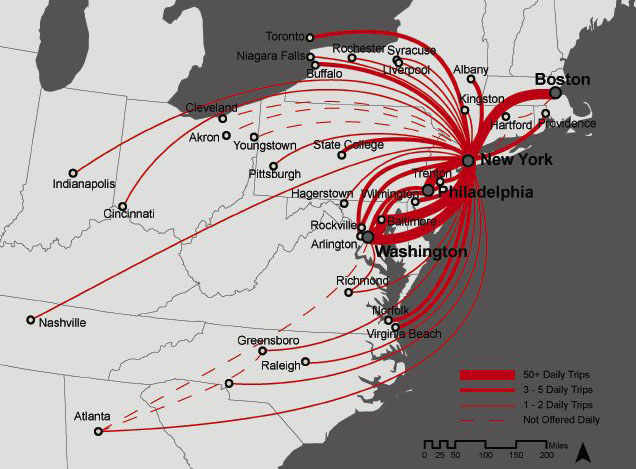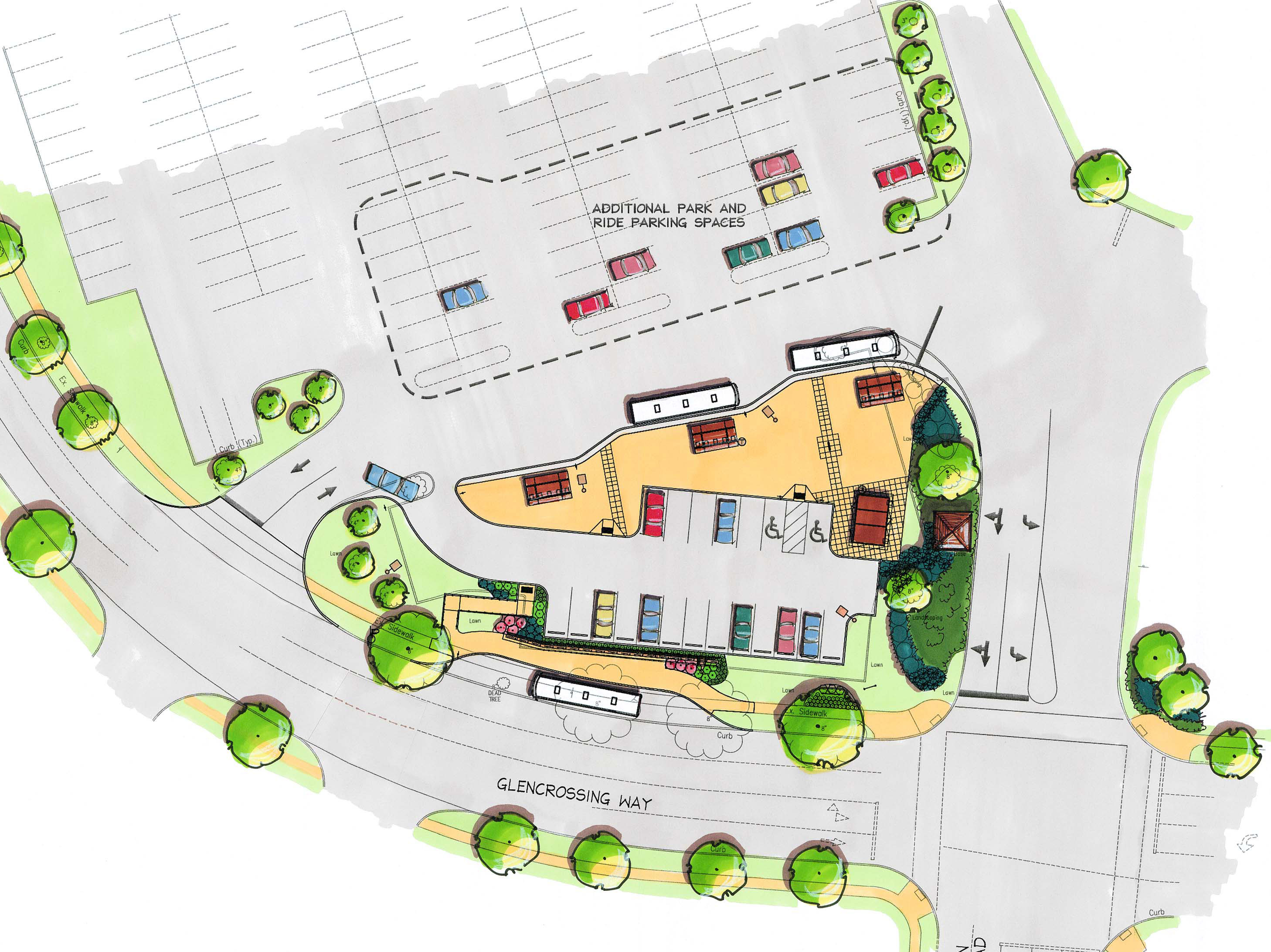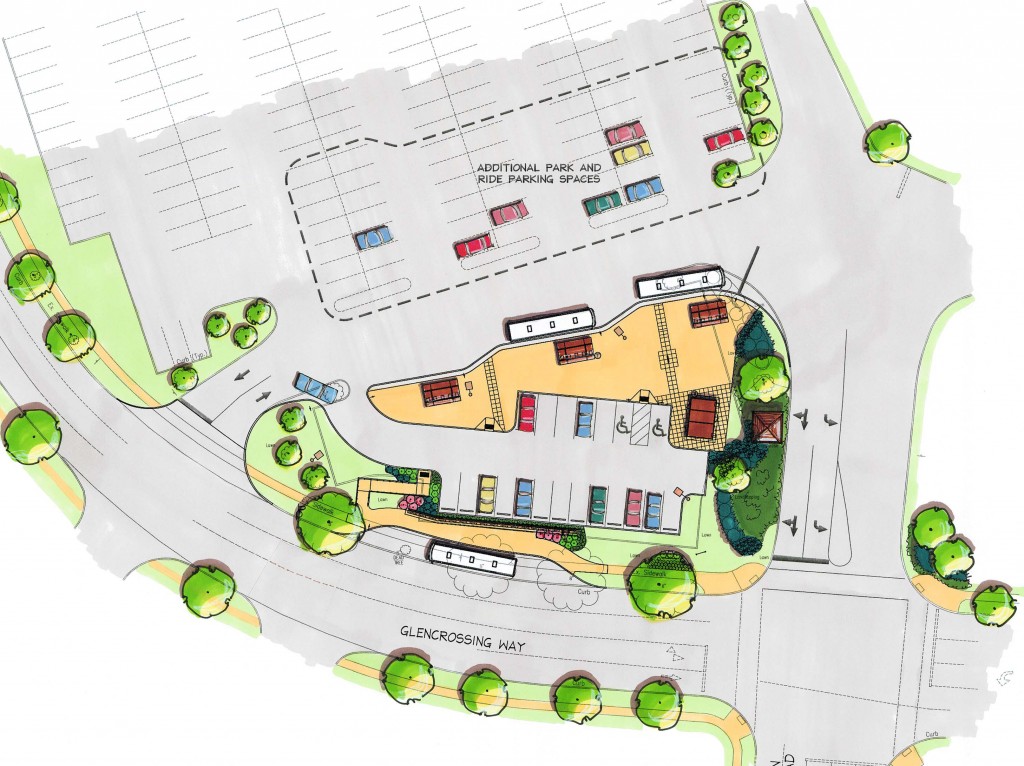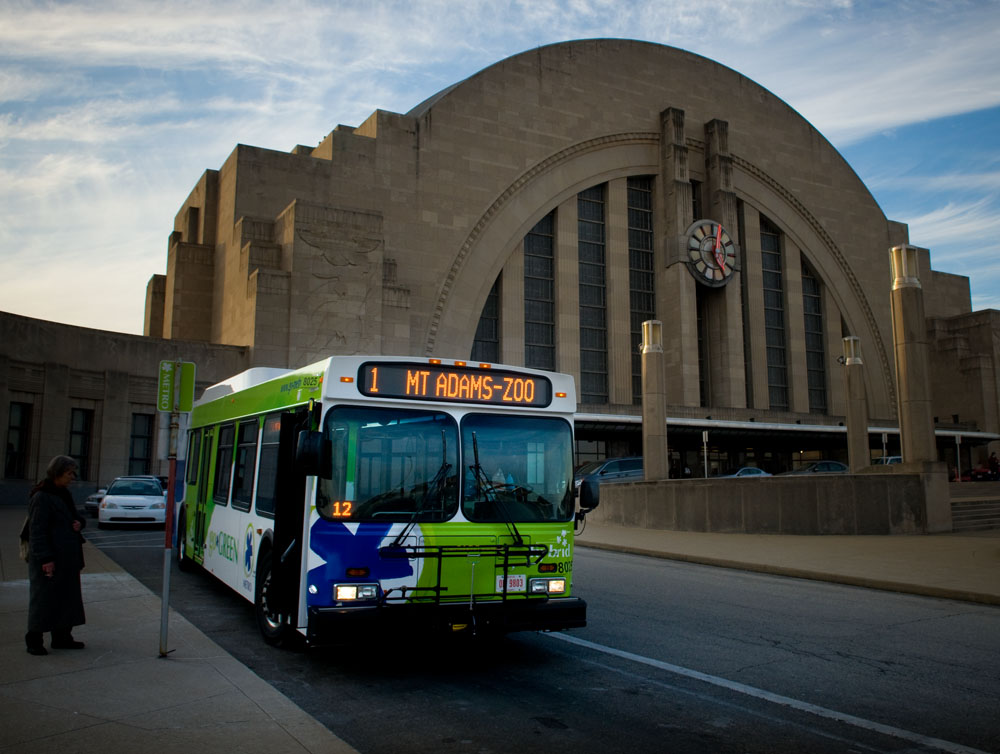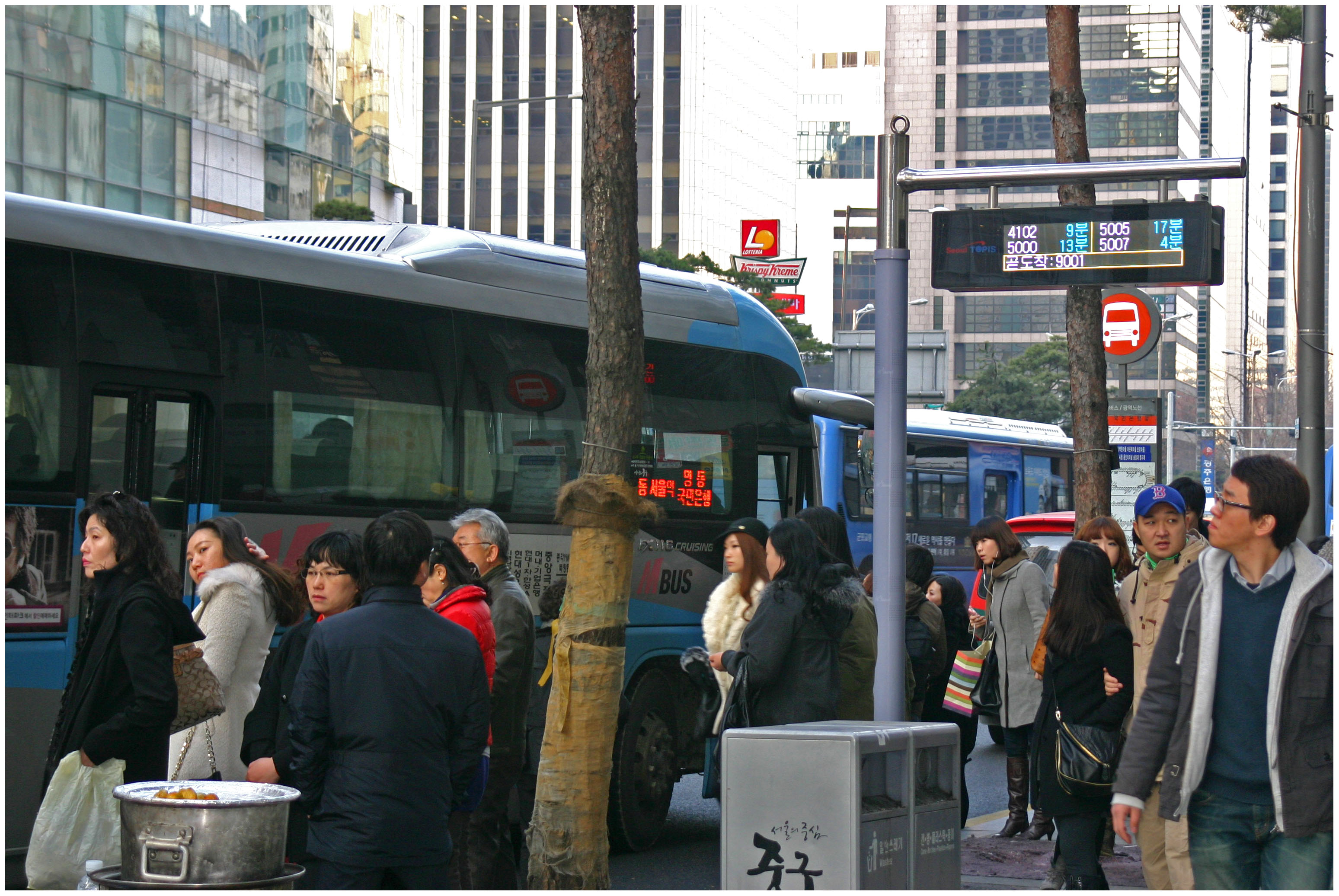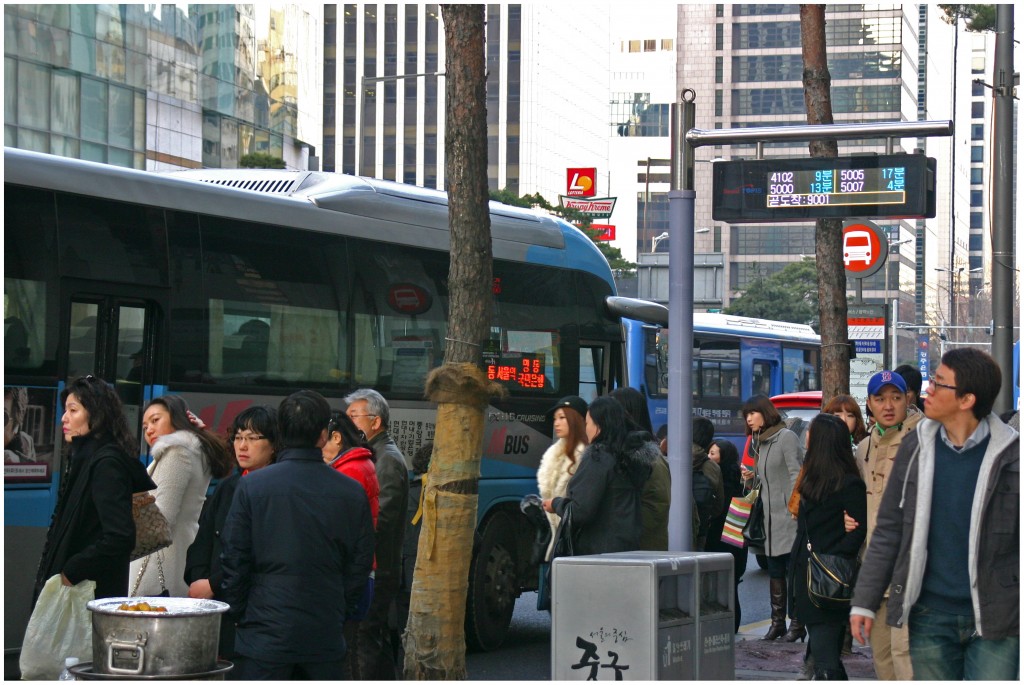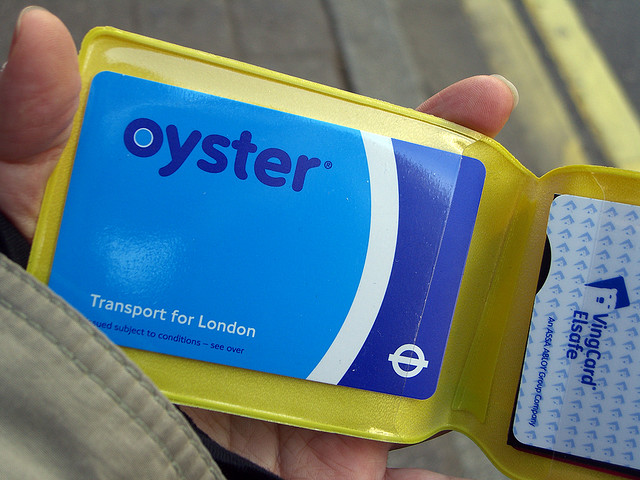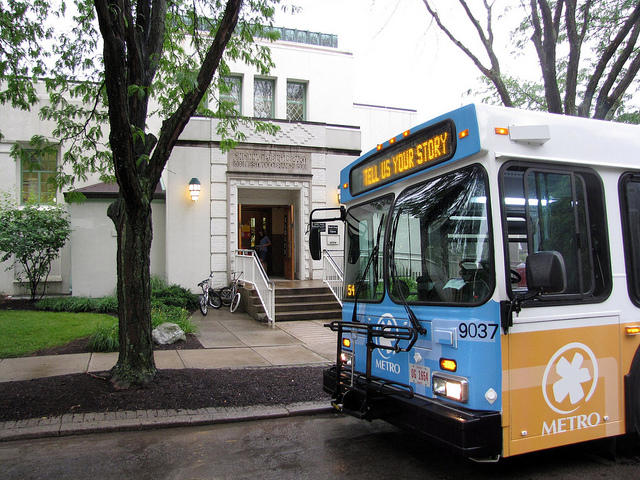Imagine falling asleep in Cincinnati and waking up in Manhattan the next morning. It’s not a dream but another travel opportunity for the Cincinnati region. With the increasing cost of air travel and the declining flight activity at shrinking airport markets like CVG, many people are turning to low cost alternatives provided by inter-city buses.
Unlike the traditional Greyhound model, curbside intercity bus-service has become popular through services such as Megabus and Bolt Bus. These bus companies based their business plan on the Chinatown bus model developed by the Fung Wah buses in the late 1990’s. Megabus currently offers direct connections to Chicago and other Midwestern cities, including Columbus and Pittsburgh, but does not offer continuing service to New York City. Meanwhile, Bolt Bus has no Cincinnati stops.
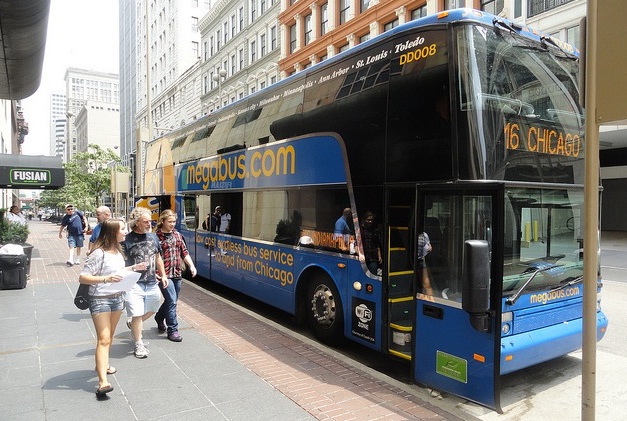
Megabus picks up passengers along Fourth Street in downtown Cincinnati. Photograph by Thadd Fiala for UrbanCincy.
According to a recent article from the Atlantic Cities, Chinatown bus service does run direct from New York City to Cincinnati. UrbanCincy investigated the claim and found that there are actually two Chinatown bus services that have established direct bus service from New York City to Cincinnati as well as Dayton and Columbus.
Services operated by Coach88 and Sky Horse Bus operate six days a week, and arrive in the morning after a 12-hour overnight trip. According to their websites, buses come equipped with comfortable recliner seating and restrooms. Select Coach88 busses offers free wi-fi access.
However, Chinatown buses are not for the faint of heart. In a recently released report published in Urban Geography, authors Nicholas J. Klein and Andrew Zitcer conduct several focus groups to gauge rider experience on Chinatown buses. They found that the “participants rendered Chinatown and the Chinatown bus as an “authentic” urban experience.” And because their routes are designed to connect different Chinatowns, riders will have a unique opportunity to experience Asian culture.

Chinatown inter-city bus route map. Graphic from ‘Everything but the Chickens: Cultural Authenticity Onboard the Chinatown Bus’ report by Urban Geography.
Both dropoff locations are in commercial lots which make long-term parking a challenge. Both services currently drop off thirteen miles from downtown in Springdale. Coach88’s drop off point is on Princeton Pike Rd. near the Tri-County Mall and Sky Horse is along Rt. 4 near I-275. These locations are near city bus service provided by SORTA, however, both the #20 and #78 routes are located a half-mile to almost a mile near the drop off locations.
Still curbside bus service continues to appeal to many people, including local resident Rob Naylor.
“Curbside pickup also allows for quicker and more convenient boarding process, which actually makes travel time comparative to air travel in many cases,” Naylor told UrbanCincy. “I also found the curbside pickup to even feel safer, because you’re being picked up on a street often in the middle of downtown, so you’re around activity.”
These bus companies are filling the growing market of low-cost intercity travel alternatives brought on by rising airfare prices. It also serves as a missed opportunity for several state governments, including Ohio which could have capitalized on with expanded inter-city rail connections.
Additionally, implementation of a plan to consolidate these bus services under a single destination like the Riverfront Transit Center, first proposed last July by UrbanCincy, would greatly enhance the accessible population base for these services thus integrating the service into Cincinnati’s broader regional transportation system.
